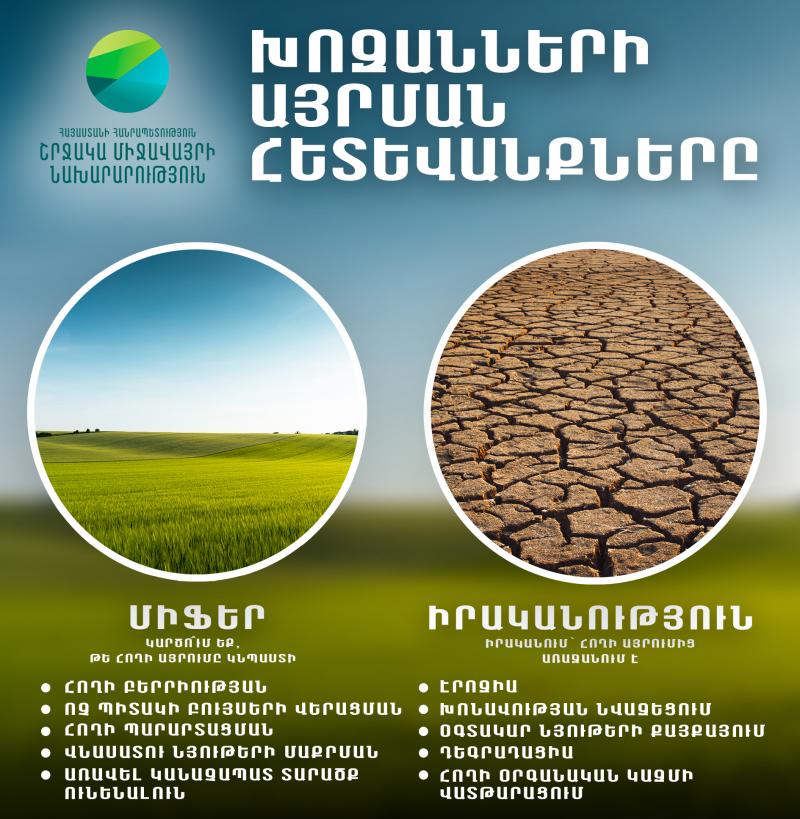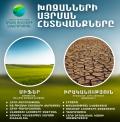The causes of fires are both natural and man-made, but statistics show that they are mainly man-made and the result of human inattention or wrong activity.
Often, people, not realizing its negative consequences, burn stubble and plant residues before or after agricultural work, directly contributing to the destruction of the most important components of the environment, in particular to the loss of quality properties of the soil.
Fire deteriorates the organic composition of the soil, reduces moisture, the surface layer disintegrates into particles, as a result of which the soil is easily exposed to wind and water erosion.
Burning of mowed fields contributes to the decomposition of many useful substances in the soil, not only the organic and mineral mass in the upper layer of the soil is burned, but also many other nutrients suitable for plants:
Frequent fire/burning reduces soil moisture infiltration and retention capacity by 38-40%.
In burned/burnt areas, humus composition decreases by 11-30% and total soil oxygenation by 7-25% in 10-13 years.
If the temperature of the fire above the ground is 700-8000 C, then the temperature on the surface of the soil reaches 350-4500 C, at a depth of 3 cm from the surface of the soil - about 150-3000 C, and at a depth of 5 cm - about 1000 C. Thus, for living organisms living in the soil, the lethal heat of burning/combustion at the soil surface penetrates 2 to 5 cm. As for greenhouse gas emissions, the burning of harvested fields releases significant amounts of methane, carbon monoxide, nitrogen oxides, and nitrogen oxides (CH4, CO, N2O, and NOX) into the atmosphere.



